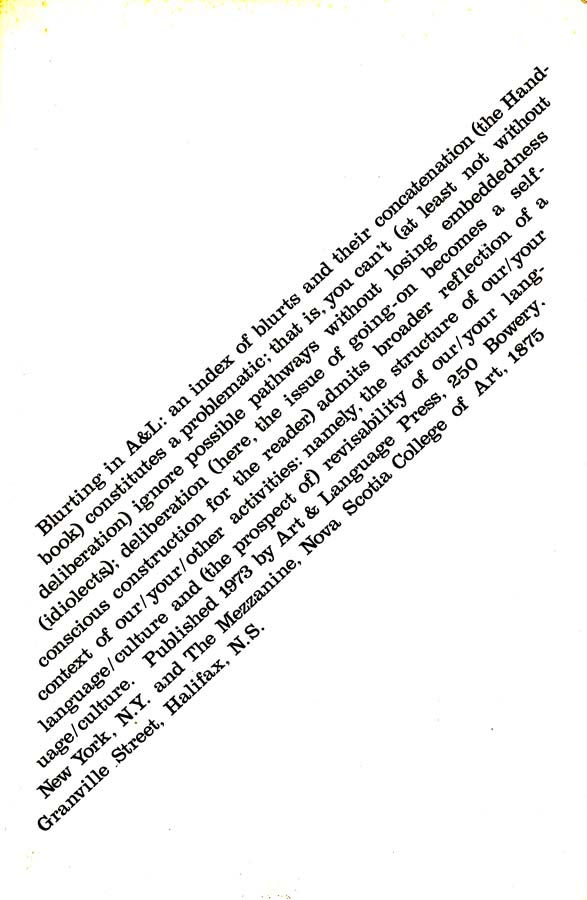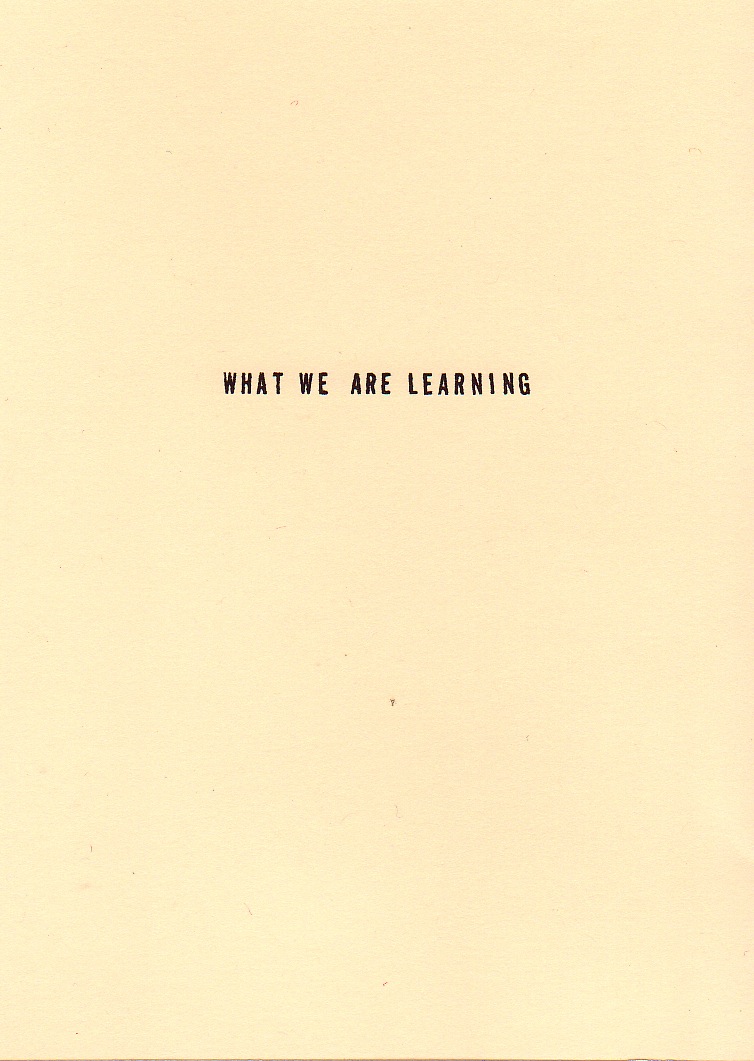Valerio Borgonuovo, Silvia Franceschini (eds.): Global Tools, 1973-1975 (2015)
Filed under book | Tags: · 1970s, architecture, art, body, city, design, education, learning, self-education

“Global Tools was a multidisciplinary experimental program of design education founded in 1973 in Italy by the members of the Radical Architecture including Ettore Sottsass Jr. and Andrea Branzi among others. It was conceived as a diffuse system of laboratories (firstly in Florence, Milan and Naples) promoting the ‘study and use of natural materials and their behavioural characteristics’ with the support of media (namely the magazine Casabella) and aimed to establish an alternative relation with the Italian industry.”
“For the first time in the forty years that have passed since its formation, the experience of the Global Tools counter-school has been brought together in book form, uniting the images and archive documents that were produced over the few short years of its existence. This volume is compiled to chronicle and evaluate the three years of seminar activity that took place between Florence, Milan and Naples in the early 1970s, bringing to a wider audience the story of this tentative attempt to realize an experimental dispersed educational program that would serve as an alternative to the university as an institutional model of reference.
The aim of Global Tools 1973-1975 is to provide a tool for the understanding and reconstruction of the experience shared by, among others, the architects and designers Ettore Sottsass Jr., Alessandro Mendini, Andrea Branzi, Riccardo Dalisi, Remo Buti, Ugo La Pietra, Franco Raggi, Davide Mosconi, and members of the groups Archizoom, 9999, Superstudio, UFO and Zziggurat; conceptual artists and intellectuals Franco Vaccari, Giuseppe Chiari, Luciano Fabro and Germano Celant. The book also contextualizes Global Tools within a more complex network of references and connections. The critical perspectives offered by the contributions of experts and scholars are employed to shed light on those aspects of contemporary experience shared by this pedagogical utopia with the wider world.”
With contributions by Manola Antonioli, Valerio Borgonuovo, Alison J. Clarke, Beatriz Colomina, Silvia Franceschini, Maurizio Lazzarato, Franco Raggi, Simon Sadler, and Alessandro Vicari.
Publisher SALT, Istanbul, July 2015
Creative Commons BY NC ND 3.0 License
ISBN 9789944731461
173 pages
Blurting in A & L [Art & Language] (1973/2002) [English/German]
Filed under book | Tags: · ambiguity, anthropology, art, art criticism, art system, autonomy, conceptual art, experience, ideology, knowledge, language, learning, mapping, philosophy, theory, translation, work

Blurting in A & L is a printed booklet whose content is a dictionary with blurts or ‘annotations’. The annotations were written by the members of Art & Language Ian Burn, Michael Corris, Preston Heller, Joseph Kosuth, Andrew Menard, Mel Ramsden and Terry Smith.
“The project began as a collaboration among Art & Language members in New York City. In weekly meetings from January to July 1973, eight participants produced written statements called ‘annotations’ or ‘blurts’ on topics ranging from the ordinary to the abstruse (art, learning, ambiguity, heuristics, stimulus-meaning). In each subsequent meeting the group would return with new statements that ‘went on’ from the last week’s annotations. In the end, through the efforts of Michael Corris and Mel Ramsden the comments were compiled in a handbook. In all, some 400 odd entries were edited and grouped according to subheadings with vague quasi-logical connectors linking them to one another.
Since the connections among the entries were many-to-many, readers could choose their own course through the material, which blurred the boundary between passive reader and active participant. This was a key ideology of Art & Language – the idea that membership was permeable or, as one participant put it, ‘a function of participation’.” (from a commentary by Chris Gilbert, Mute, 2002)
An online version installed by ZKM, Karlsruhe, in 2002 includes articles which contextualize Blurting in A & L within the activities of the group in the 1970s. Present and former members of Art & Language (Michael Baldwin, Michael Corris, Philip Pilkington, Mel Ramsden) summarize and reflect on their activities. Thomas Dreher embeds Blurting in A & L within the proceedings of the discourse of Art & Language.
Blurting in A&L: An Index of Blurts and Their Concatenation (the Handbook) Constitutes a Problematic; That Is, You Can’t (at Least Not Without Deliberation) Ignore Possible Pathways Without Losing Embeddedness (Ideolects); Deliberation (Here, the Issue of Going-On Becomes a Self-Conscious Construction for the Reader) Admits Broader Reflection of a Context of Our/Your/Other Activities: Namely, the Structure of Our/Your Language/Culture and (the Prospect of) Revisability of Our/Your Language/Culture
Edited by Michael Corris, Mel Ramsden
Publisher Art & Language Press, New York, and The Mezzanine, Nova Scotia College of Art, Halifax, 1973
92 pages
Online version and accompanying publication edited by Thomas Dreher, 2002.
Announcement of the hypertext version (Syndicate, 2002)
Blurting in A & L (1973, HTML)
Blurting in A & L Online (English, 2002, HTML)
Blurting in A & L Online (German, 2002, HTML)
What We Are Learning (2010)
Filed under book | Tags: · authorship, learning, self-education

For two years (2008-2009), What We Are Learning issued a monthly compendium of brief reports from several dozen friends, telling what each of them had learned recently. This book gathers their reports into a uniquely compelling narrative that displaces the drama of the individual with the pleasures of the collective. What We Are Learning is one of the most provocative and successful experiments in dispersed authorship that we have seen.
Edited by Sam Lohmann, Colin Beattie and Alyse Emdur
Publisher Jank Editions, Portland, OR
ISBN 9781935662112
133 pages
editor (Sam Lohmann)
editor (Alyse Emdur)
publisher

